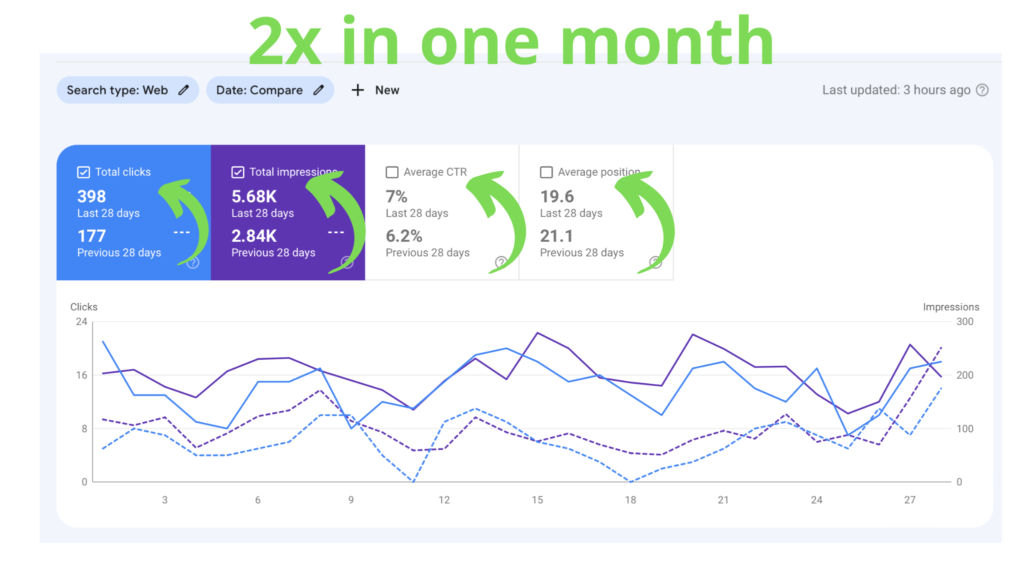Imagine a website as a cool clubhouse on the internet. Now, picture making that clubhouse super popular by bringing in lots of friends. Well, guess what? We took a regular clubhouse and made it way, way more popular – 1230% more!
We did this by using White-hat SEO techniques while concentrating on User Experience.
This is a story of how we managed to turn a outdated website into a lead-generating machine. Stick around and find out how we managed to accomplish all this.
The Beginning
Without a doubt this website was uninteresting. Take a look.
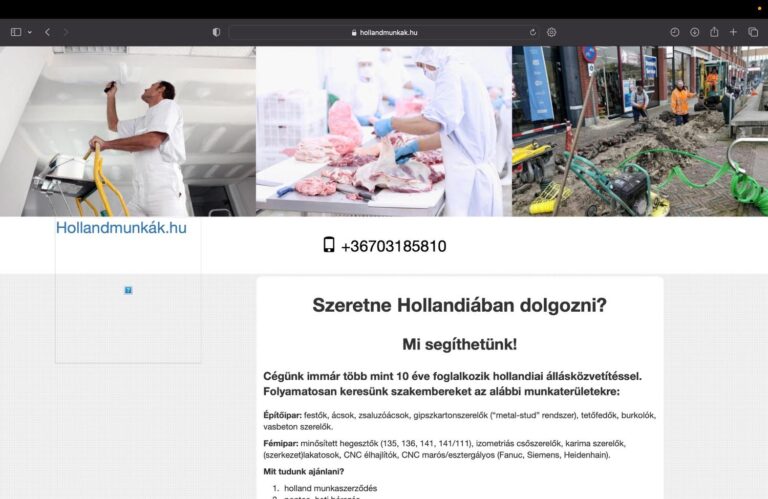
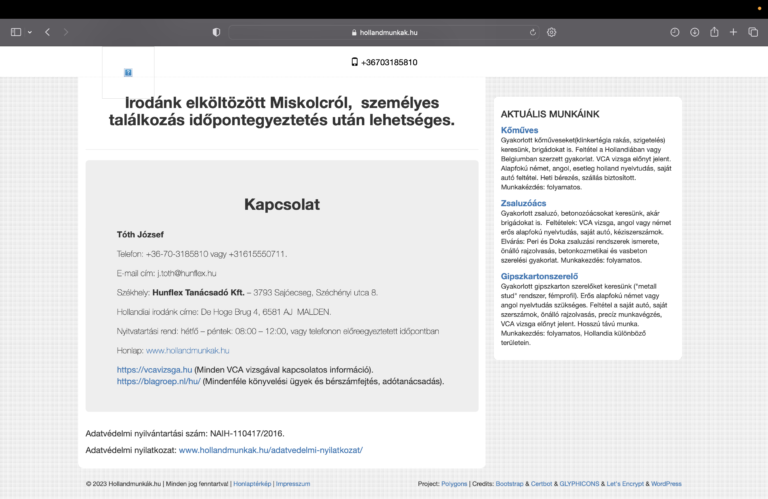
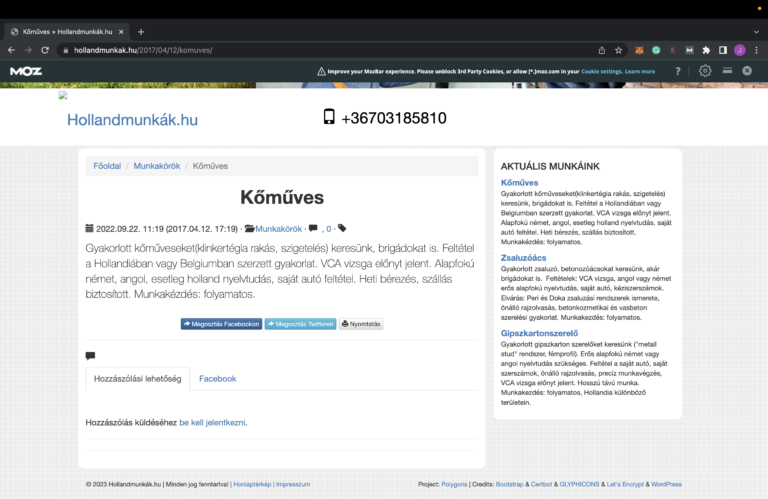
This is a Hungarian project of mine. The company specializes in finding good quality workforce and outsourcing them to western-European countries.
Would you be surprised if I said that the page wasn’t even ranking for any keywords? Well, that was the case.
So we had a site that was straight from times when the internet was a new thing.. and it had Zero potential.
What did we do? We picked up a sledgehammer and started to deconstruct it.
Rarely is the case for any website, but in this case, this one was a must. The site had LITERALLY 0 organic search traffic, so we didn’t hurt anything.
Oh, and the pages weren’t even indexed, because this bad boy was activated.

It is also important to mention that the site followed ZERO Guidelines from Google.
The site didn’t have a logical site structure, the pages were hard to find, the content was vague and duplicated, the information was outdated, and the company information was wrong.
Since the potential customers here are people interested in working abroad, we completely redesigned the page and gave it a proper business page treatment. This means we created the following pages:
- Home page
- Contact page
- About Us page
- Services page
- Sub-service 1
- Sub-service 2
- Sub-service 3
- Sub-service 4
- Sub-service 5
- Legal pages
So how does it look now? Something like this.

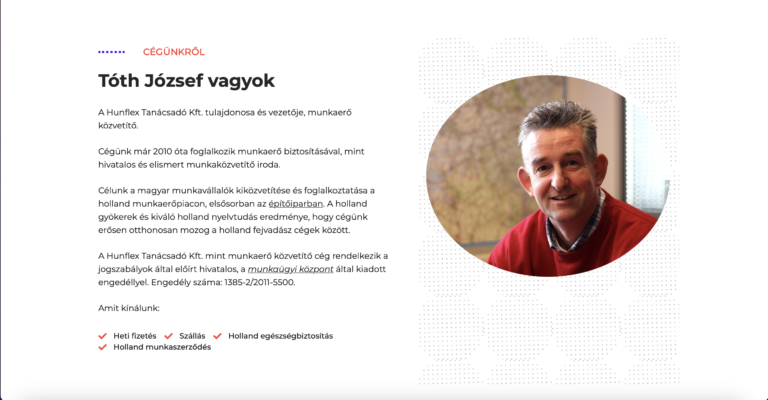
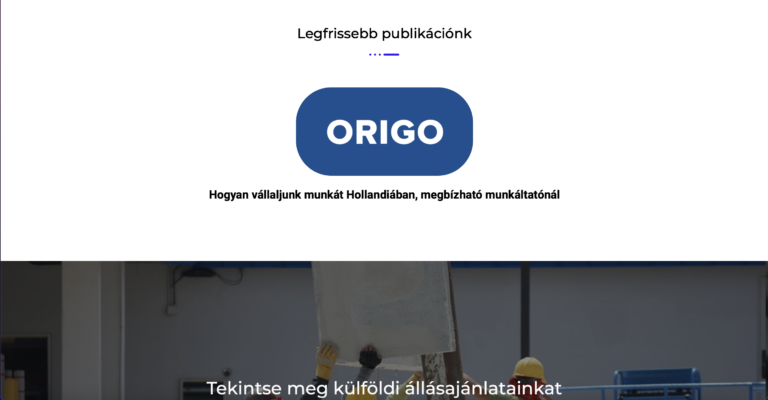

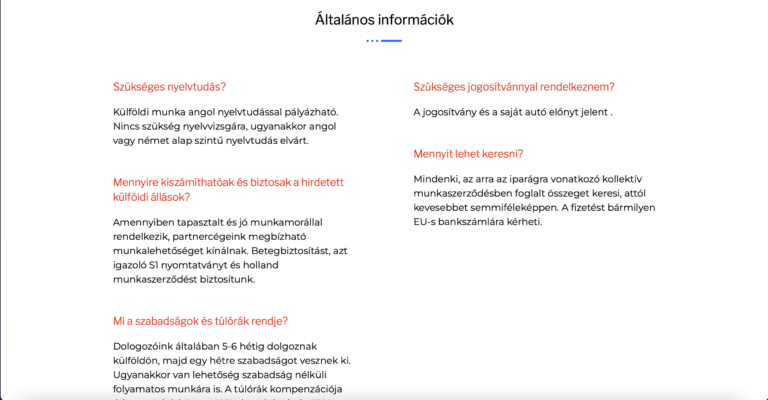
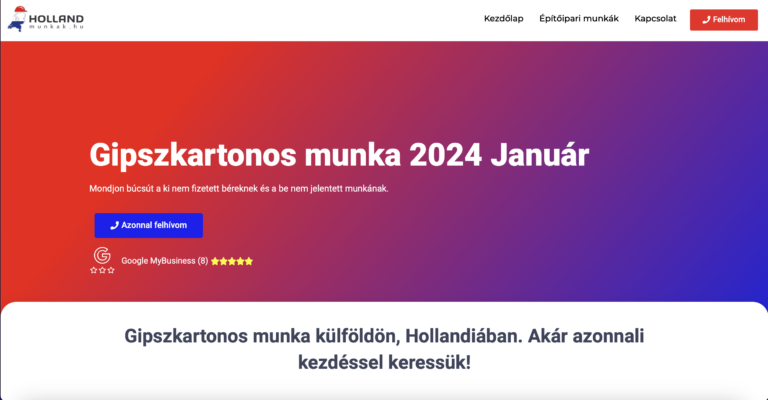
So let’s jump back to our client.
Many headhunter agencies were charging fees for employment abroad, which is illegal. It turned out that almost 80% of workers experienced the following while working abroad:
- They weren’t paid on time
- They weren’t paid at all
- They had no contract
- They had no healthcare or insurance
- Even if they had contracts, they were mostly contracted to a Hungarian company not to one abroad (thus no Western European benefits)
- They were paid in cash
This is a HUGE problem. Not just for human beings, but as a website owner as well. If each of your visitors are skeptical, you won’t get many calls.
Fortunately, our client’s key selling point was the complete opposite of what I described. This business was founded upon trust and humanity, so our only task was to communicate this to the visitors, which we did.
As I’ve mentioned, this website doesn’t have a lot of pages. Heck, we didn’t even create a lot of supporting content for it.
Still, with the few pages it has, we managed to secure more leads than the company can handle.
You can see a very healthy upward trend in the Search Console graphs. But I have to be honest, there is a good amount of seasonality in this.
Since the workers are looking for jobs after the holidays are over, and the work starts when the weather starts to clear, we are in the best possible position.
„A big supply of workforce in the beginning is the perfect way to start the year.”
The SEO Part
Keyword Research
Let’s talk about how keyword research should be conducted.
1. Brainstorming
Chances are, you already know what kind of keywords you are after. It is best practice to gather all of the search queries that you can think of. This doesn’t mean you need to use software such as Ahrefs, Majestic, etc. This means you should think of some basic terms you are going to use as inputs.
2. Using Software and Creating Clusters
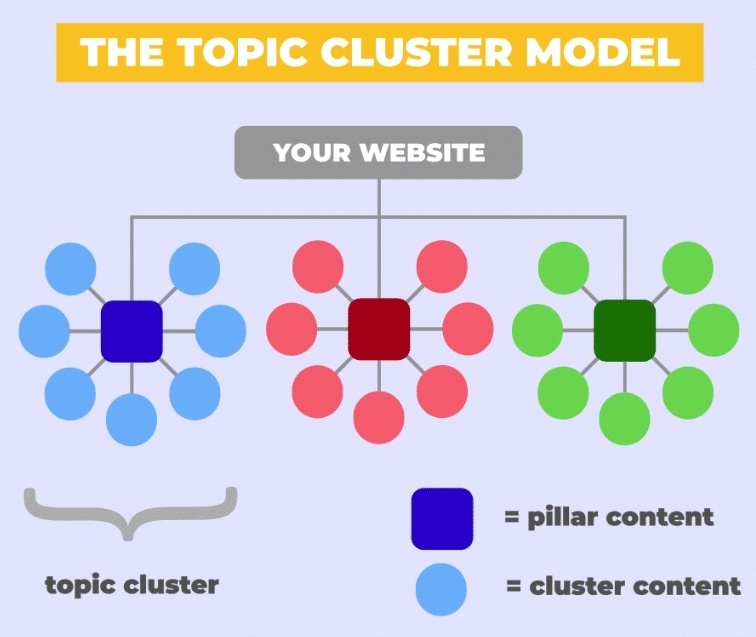
Once you have your list of ideas, type them into your preferred Keyword research tool. I would not specify which one, because in my opinion it always comes down to personal preference. Here you should concentrate on finding seed keywords.
These are the shorter, higher search volume terms. But keep in mind, that you shouldn’t always go for the shortest term.
For example: you sell car insurance on the web. If you start your Keyword research journey with „cars”, you will get a lot of unrelevant keyword ideas about car insurance.
But if you find a seed term like: „Car insurance US” or something specific, save it.
Now, onto topic clusters:
If I had to suggest something, I would suggest using LowFruits.io.
This tool is specialized in creating topic clusters. This means it can give you all the keywords which surround the topic: „Car insurance US”
This list of keywords is very important. If you cover every single topic within the cluster, Google will have no chance, but to consider you as an authority.
Welcome to Topical Authority
You may be wondering: do I have to create a different page for every single keyword? The answer is no.
BUT,
You should cover one topic on one page. What does this mean?
There may be very similar terms in your search journey, or semantically similar ones. How do you decide which keyword to use?
- Take a look at the first result. Analyze their Title tag. If they have multiple high search volume keywords there, you should follow their lead.
- If the keyword you typed in is not in your competitors Title tag, open the page and take a look at their H1, H2’s and H3’s.
- Use common sense. If two keywords are almost identical, do not create different pages.
3. Spying on Competition

By searching for the most relevant keywords that describe your business/product/service, you will come across many competitors.
Save them, see which one of them comes up most frequently, and take a good look at their Title Tags, Headings, and Links.
If you have a great SEO tool, you will be able to extract what keywords they are ranking for. This way, you can get an idea of where the majority of their traffic comes from.
Bonus Tip #1
- „competitor.com/sitemap.xml”
- „competitor.com/page-sitemap.xml”
- „competitor.com/post-sitemap.xml”
- You get an idea of how many pages you need to rank well and build topical authority
- You get great post ideas with their primary keywords in the URL’s
Bonus Tip #2
Once you found relevant keywords, take a look at who ranks first. It is either because they have massive amounts of links, or because they cover the topic very well (basically killed the On-Page optimization part).
You can often find secondary keywords with the main keywords. The reason is that Google believes those terms are relevant to each other, therefore they belong together. If you want to rank a page for more keywords, simply include your secondary and supporting keywords in the H1, H2s, and H3s, or in the Title Tag.
Page Creation and UX

There are tons of relevant examples of how a home, service, or about us page should look like. There are many great UX gurus out there, but I would recommend Despina Gavoyannis’ course on UX.
She was the one who led me to the knowledge needed to convert visitors into leads.
If I wanted to give you everything on UX, this case study would be like Dostoevsky’s Crime and Punishment, which is an awesome piece of literature, but not easily digestable.
Much like this case study…haha. Okay, focus.
The goal is, as I said before: To convey trust and look inside your potential customers/visitors head and face their objections and solve them.
On-Page Optimization with Content Creation
When it comes to On-Page there is a TON of things you should look out for. Check out this guide to understand what best practices to implement when considering doing On-Page SEO.
Using On-Page SEO tools
Once you start to get into On-Page SEO, you can get confused quickly. You are well within your rights to ask:
What the bloody hell is Semantic SEO, LSI Keywords, and Natural Language Processing (NLP)?
Without getting nerdy, the answer is simple. As I said, Google is an algorithm. Among other things, it counts keywords. It knows exactly what terms (words, keywords) are frequent when talking about different topics.
As an example, when you write about solar panels, you should also mention inverters, DC, green energy, roofs, etc.
If you want to kill this part like we did, it is easier to use On-Page SEO tools like we do. For this project, I used PageOptimizerPro.
The tool is a phenomenal piece of work from a fantastic SEO professional called Kyle Roof, whose work I strongly recommend to anyone trying to break into the SEO business.
I used this tool to ACE my On-Page optimization, so our service pages would rank very well.
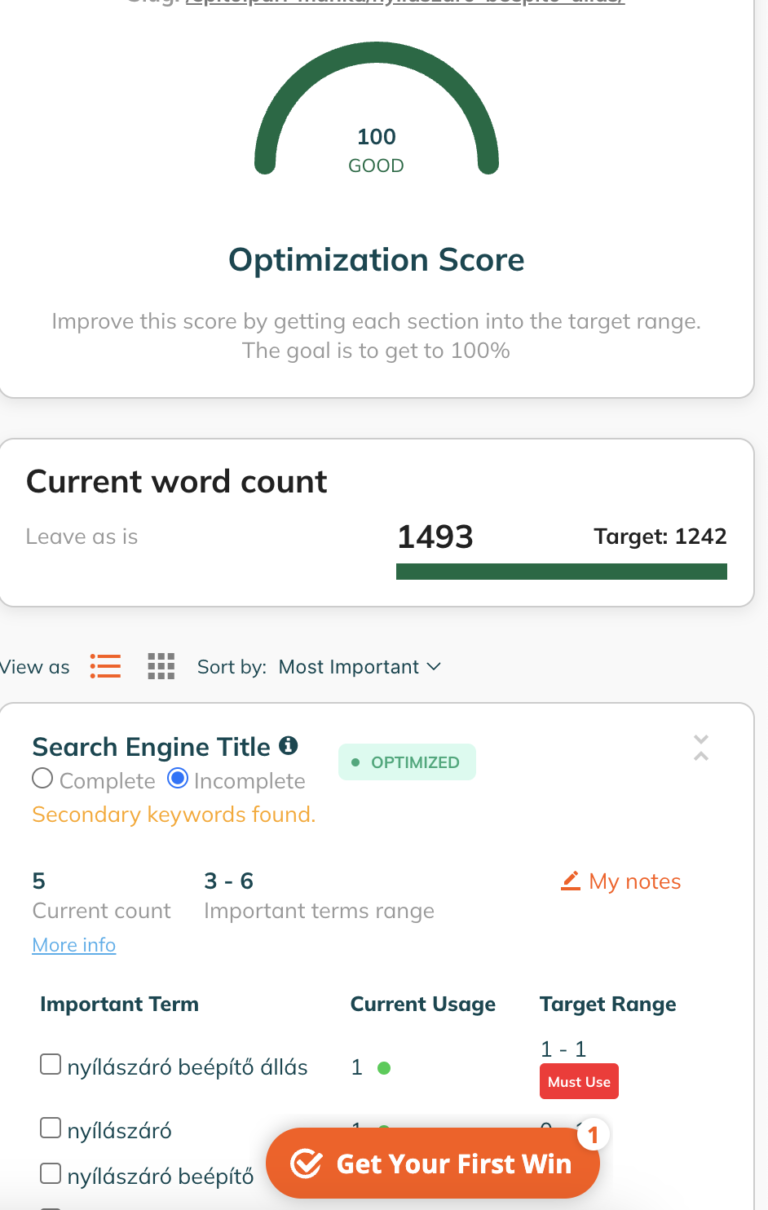
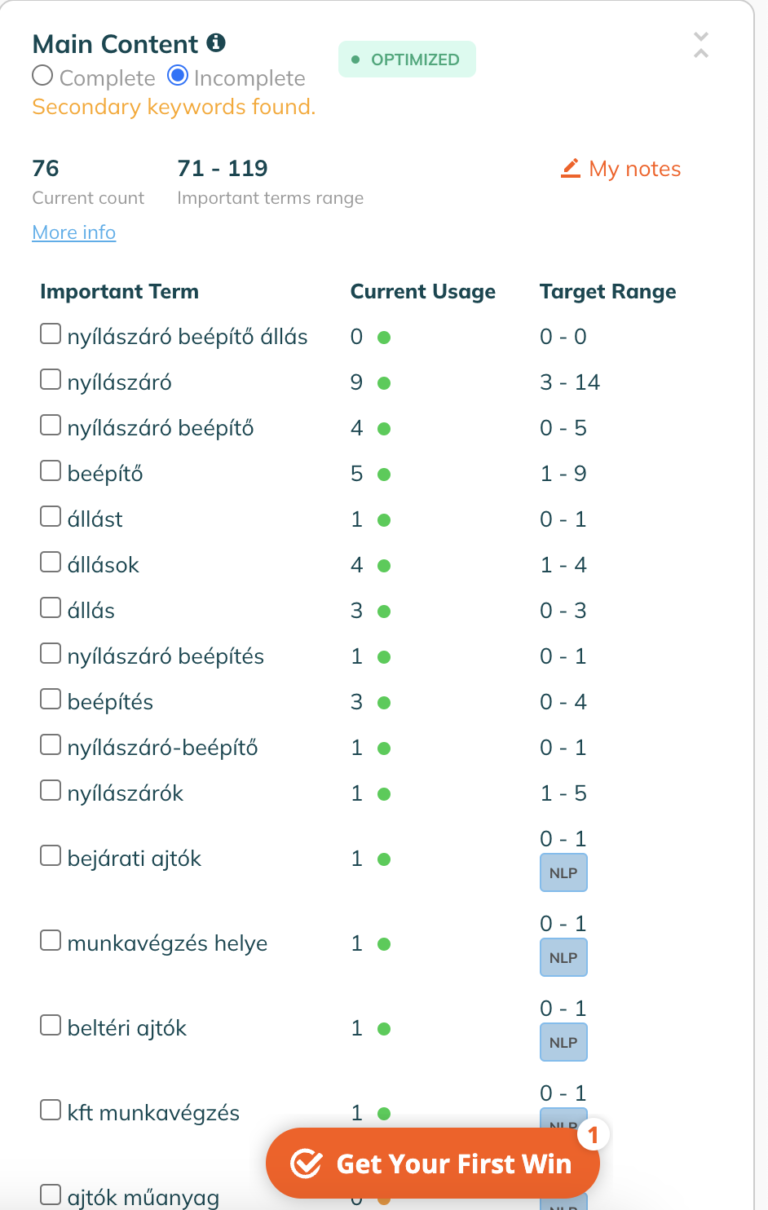
Link Structure (Silo’s)
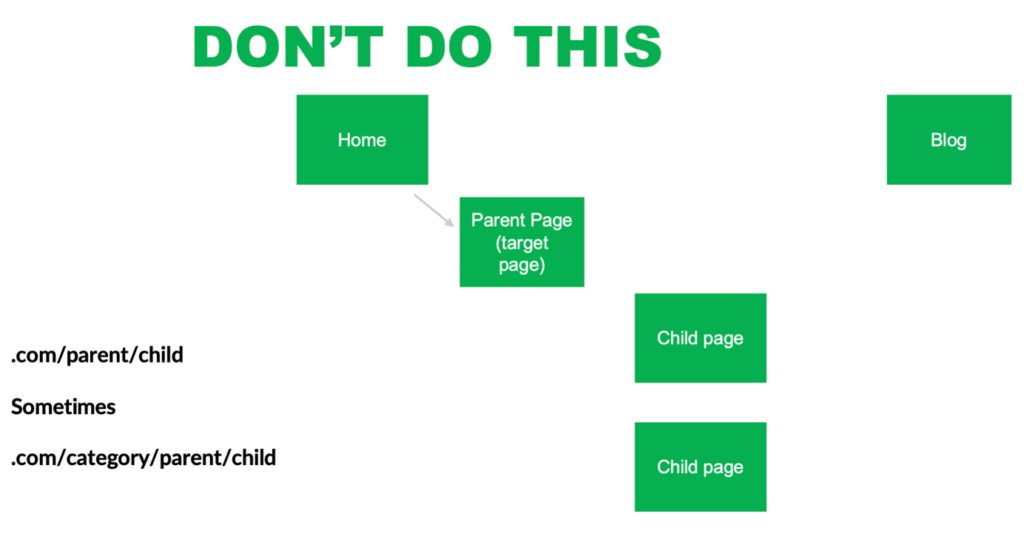
And now, here is how you should do it correctly.

This Silo makes it easy for Google to understand which topics are in one topic cluster and guarantees a perfect flow of your link juice. This means if one page receives a link, every page in the Silo benefits from it.
Link juice flows through text links, so use them wisely!
Link juice or link power is when an authoritative site references you on their website. If they do it without a rel:nofollow tag, the strong page passes some strength to the page it is mentioning.
But if you do not connect your pages like I showed you above, the link juice will only strenghten one specific page.
If the pages are connected, every page benefits. Do not forget, you should use text links (hyperlinks)
Off-Page SEO
As I mentioned, the website was a wasteland. Of course, it only had accidental, non-relevant links. Removing them was a real hassle, but it was worth it.
After that, we looked at the first results and copied their directory links. We basically got the same ones, with some extras.
After that, we released a PR article for a very popular news site, which also gave a huge boost both link-wise and trust-wise. Of course, we are not talking about “Nofollow” links.
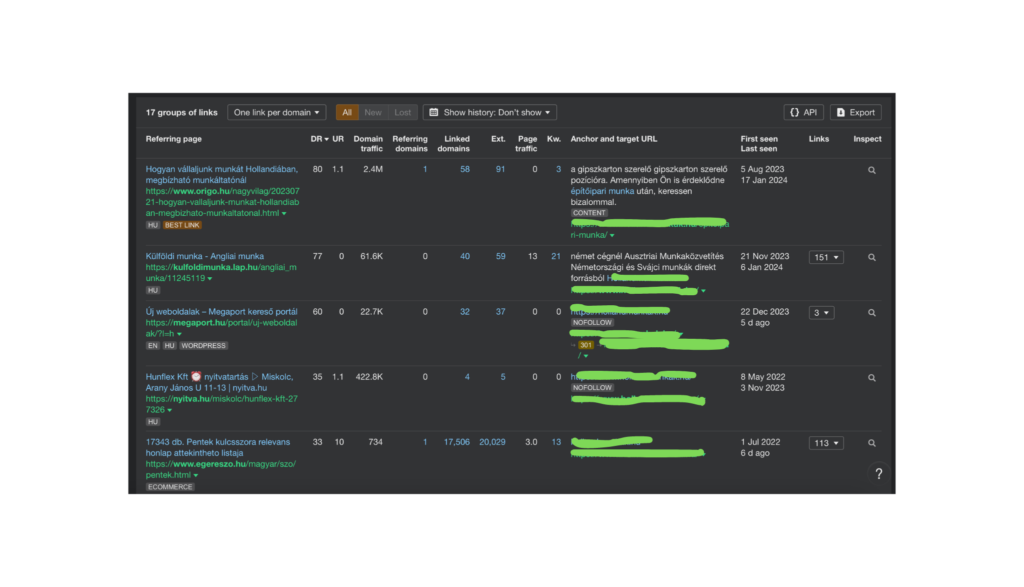
SCHEMA Markup
This is the Esperanto of coding languages, created for Google.
SCHEMA Markup is a great way to connect your social media profiles and tell Google what your business is about.
This client had two different Facebook groups with thousands of followers, so we connected it to the website.
Also, we did some JobPosting Schema to really make sure the big G understands what the pages were about.
Google My Business
Since the business was not the type of organization you could visit, we only fixed what needed to be fixed. We updated the social media profiles, chose the right niche, etc.
After that, we advised the business to reach out to their clients and ask for reviews. And guess what? They were happy to help.
Conclusion
It is always worth it to stay within Google’s guidelines. We only implemented White-hat SEO practices and didn’t need to spam content on a large scale.
The practices implemented are now responsible for charts like this:
